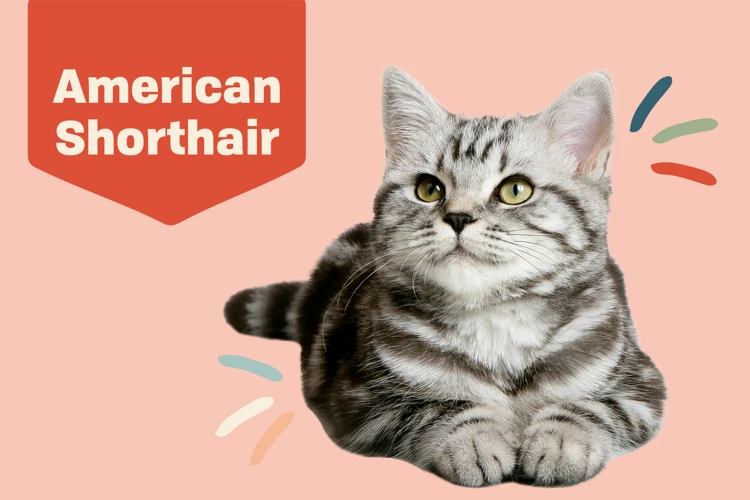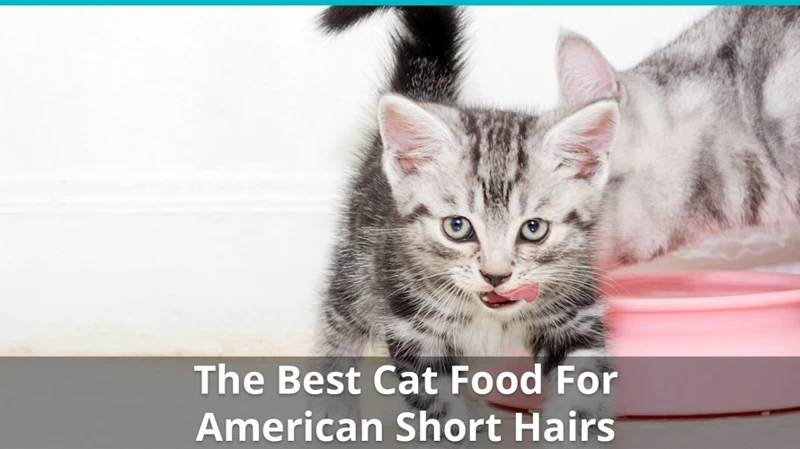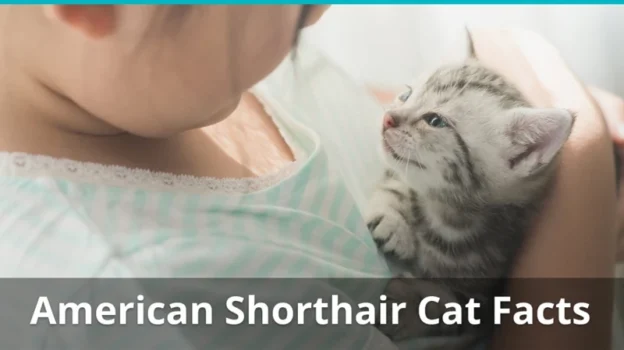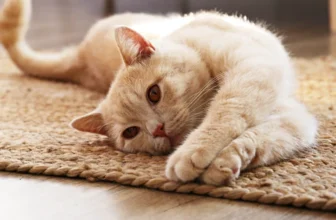As our feline companions enter their senior years, it’s important to provide them with a comfortable living environment that meets their changing needs. American Shorthair cats are a popular breed that often live well into their teens and even early twenties. However, as they age, they may require some adjustments to maintain their wellbeing. In this article, we’ll explore tips for creating a comfortable living environment, ensuring a nutritious diet and exercise routine, proper health care, and grooming for your senior American Shorthair cat. Let’s dive in and help our furry friends enjoy their golden years with dignity and comfort.
Creating a Comfortable Living Environment

When it comes to ensuring your senior American Shorthair cat is happy and healthy, few things are more important than creating a comfortable living environment. As cats age, their needs change, so it’s important to provide them with a living space that is tailored to their unique needs. From soft sleeping areas to gentle lighting, there are several things you can do to help your furry friend feel right at home. Let’s take a closer look at some key tips for creating a cozy living space for your senior American Shorthair cat. For tips on keeping your senior American Shorthair healthy, check out our article on preventative health care for senior American Shorthair cats.
Provide Soft Sleeping Areas
As cats age, they tend to spend more time sleeping and resting, making it important to provide them with comfortable sleeping areas. **Soft sleeping areas** can help elderly American Shorthair cats feel more relaxed, resulting in a better quality of life. Here are some tips on how to create cozy and comfortable sleeping spaces for your senior feline.
- Choose the right bed: A soft and comfortable bed is essential for senior American Shorthair cats. Look for a bed that provides good support for their joints and muscles while also allowing them to stretch out fully. There are many options available, from orthopedic beds to heated beds, so you can find one that suits your cat’s needs.
- Add some soft blankets: Layering soft and cozy blankets on top of your cat’s bed can provide extra warmth and comfort. Choose blankets made from soft materials like fleece or microfiber, and make sure to wash them regularly to keep them fresh and clean.
- Set up multiple sleeping areas: Providing your senior American Shorthair cat with multiple sleeping options can be beneficial. This allows them to move around and find the perfect spot depending on their mood. Consider setting up a bed in different areas of your home, such as in a quiet room or near a sunny window.
- Keep the sleeping area clean: Regular cleaning of your cat’s sleeping area is important to keep them healthy and comfortable. Wash the bedding and blankets regularly, and vacuum the area to remove any hair or debris.
- Provide hiding spots: Senior American Shorthair cats may also prefer to sleep in enclosed spaces, such as boxes or cat caves. Providing them with these hiding spots can make them feel secure and safe.
Providing soft sleeping areas is an essential part of creating a comfortable living environment for senior American Shorthair cats. With the right bed, blankets, and hiding spots, your furry friend is sure to stay cozy and happy. Don’t forget to regularly clean their sleeping areas and offer multiple options to cater to their needs. For more tips on senior cat care, check out our article on the best diets for senior American Shorthair cats or senior cat mobility exercises. And for information on keeping the litter box accessible and clean, see our article on tips for maintaining a litter box for senior American Shorthair cats.
Keep the Litter Box Accessible and Clean
One of the most important aspects of creating a comfortable living environment for senior American Shorthair cats is keeping their litter box accessible and clean. Here are some tips to ensure your furry friend has a healthy and happy litter box experience:
- Location is key: Just like humans, cats appreciate privacy when using the bathroom. Make sure the litter box is located in a quiet and low-traffic area of the house. Also, think about accessibility. As cats age and their mobility decreases, it’s important to make sure the litter box is easy to access.
- Cleanliness is important: Scoop the litter box at least once a day to keep it clean and odor-free. It’s also important to completely change the litter and wash the box every two to three weeks.
- Choosing the right litter: Older cats may benefit from a softer litter. Consider using a litter made from materials like paper or corn, rather than a clay-based litter that can be harsh on paws. Also, avoid scented litters, as they can irritate a cat’s sensitive nose.
- Multiple boxes: As cats age, they may develop age-related conditions like arthritis that can make it difficult to climb stairs or move around the house. Consider placing litter boxes on each floor of your home to make it easier for your senior cat to access them.
Following these simple tips can help ensure your senior American Shorthair cat has a comfortable and clean litter box experience, promoting good health and overall well-being.
Offer Plenty of Water Sources
One of the most important things to keep in mind when caring for senior American Shorthair cats is to make sure they have access to plenty of clean water. In fact, maintaining proper hydration is crucial for their overall health and well-being.
Why Hydration is Important for Senior Cats
As cats age, they become more prone to dehydration due to changes in their body composition. This can lead to a range of health problems, including kidney disease, urinary tract infections, and constipation. Providing multiple sources of clean water throughout your cat’s living space can encourage them to drink more and avoid these issues.
How to Offer Plenty of Water Sources
One way to ensure your senior cat always has access to water is to use multiple sources. This might include placing a water bowl in each room of your house or adding a water fountain to your cat’s environment. A water fountain can be particularly helpful, as many cats prefer drinking moving water.
To help you keep track of your cat’s water intake, consider using a fluid intake monitoring system. This can be as simple as a notebook where you record your cat’s daily water intake, or as advanced as a digital sensor that tracks your cat’s drinking habits.
To keep your cat’s water sources clean, change the water frequently and clean the bowls or fountain regularly. It’s also a good idea to avoid placing water bowls near their litter box, as cats prefer to have separate areas for these activities.
Summary
Offering plenty of clean water sources is crucial for maintaining your senior American Shorthair cat’s health and well-being. Providing multiple sources of water, using a fluid intake monitoring system, and keeping the water sources clean can all help encourage hydration and prevent health problems related to dehydration.
Use Gentle Lighting
For senior American Shorthair cats, proper lighting is essential for maintaining a comfortable living environment. As cats age, their vision may deteriorate, making it more difficult for them to navigate their surroundings. Using gentle, ambient lighting can be a helpful solution.
It’s important to understand that cats are crepuscular animals, which means they are most active during the dawn and dusk hours. This is when natural lighting is soft and diffused. In order to mimic this natural lighting, use diffused or indirect lighting throughout your home.
To accomplish this, you can use lampshades or curtains to soften the harshness of overhead lighting. You can also opt for ambient light sources such as nightlights or wall sconces. Consider using LED lights, as they are energy-efficient and provide a soft, natural light.
Additionally, it’s best to avoid sudden changes in lighting, as they can be disorienting for senior cats. Make sure the lighting in your home is consistent throughout the day and night. If your cat is sensitive to light, you can use a dimmer switch to adjust the lighting to their needs.
Finally, it’s important to be aware of any glare or reflections in your home. These can be confusing for senior cats and may cause them to stumble or fall. Use a table or desk to block any reflections that may cause issues for your cat. By following these tips, you can create a cozy and safe living environment for your senior American Shorthair cat.
| Tip | Description |
|---|---|
| Use diffused or indirect lighting | Lampshades or curtains can be used to soften harsh overhead lighting and create a natural lighting environment. |
| Opt for ambient light sources | Nightlights or wall sconces can provide gentle ambient lighting throughout your home. |
| Avoid sudden changes in lighting | Consistency in lighting is key for senior cats to navigate their surroundings without difficulty. |
| Use a dimmer switch | Adjust the lighting to your cat’s needs with a dimmer switch for those who are sensitive or need more or less light at different times of the day. |
| Beware of glare or reflections | Avoid any reflections in your home that may cause disorientation for your senior cat. |
Keep the Environment Safe from Hazards
As your senior American Shorthair cat ages, it becomes even more important to keep their environment safe from potential hazards. Here are some tips to ensure their safety:
- Secure hazardous items: Make sure to keep all hazardous items, such as cleaning supplies, medications, and chemicals, securely locked away and out of reach from your furry friend.
- Eliminate potential choking hazards: Remove any small objects from your cat’s environment, including toys and even food items, that may pose a choking hazard.
- Provide a safe place to rest: Older cats may experience difficulty jumping up to high surfaces or getting down safely. Consider providing lower resting areas, such as a soft bed on the ground, to help prevent potentially dangerous falls.
- Use caution with open flames: Keep lit candles, cigarettes, and other open flames out of your cat’s reach to prevent burns and other fire-related injuries.
- Protect against extreme temperatures: Senior cats are susceptible to temperature extremes, so make sure to keep them cool in hot weather and warm in cold weather.
By taking these precautionary measures, you can help ensure that your furry friend stays safe and comfortable in their living environment.
Diet and Exercise

As cats age, their dietary and exercise needs change. It’s important to provide your senior American Shorthair cat with a nutritious and balanced diet, as well as opportunities for daily exercise. But what does proper nutrition and exercise look like for an aging feline? Let’s explore some tips for keeping your senior cat healthy and active.
Offer a Nutritious and Balanced Diet
To keep your senior American Shorthair cats healthy and happy, offer a nutritious and balanced diet. As cats age, their nutritional requirements may change, so it’s important to consult with your veterinarian to ensure you are feeding them the right food.
Protein is an essential nutrient for cats and should make up a significant portion of their diet. Look for high-quality protein sources, such as chicken or fish. Avoid feeding your cat protein from unknown sources or low-quality fillers.
Fat is also an important part of a cat’s diet, providing them with energy and aiding in the absorption of vitamins. However, too much fat can lead to weight gain, so it’s important to feed your senior cat a balanced amount.
Carbohydrates are generally not essential for cats, but some cat foods may contain them as a source of energy. If you choose to feed your cat carbohydrates, opt for high-quality sources such as sweet potatoes or brown rice.
Vitamins and minerals are essential for your cat’s overall health and well-being. Look for cat food that contains a balanced mix of vitamins and minerals, or consider adding a supplement to their diet.
To make it easier to understand, check out the table below for an overview of a balanced diet for senior American Shorthair cats:
| Nutrient | Role in Diet | Food Sources |
|---|---|---|
| Protein | Essential for building and repairing tissue | Chicken, fish, beef, lamb, turkey |
| Fat | Provides energy and aids in vitamin absorption | Fish oil, chicken fat, vegetable oil |
| Carbohydrates | May provide energy, but not essential | Sweet potatoes, brown rice |
| Vitamins and minerals | Essential for overall health | Fruits, vegetables, organ meats |
Remember, it’s important to consult with your veterinarian to determine the best diet for your senior American Shorthair cat. By providing a balanced and nutritious diet, you can help them live a long and healthy life.
Encourage Daily Exercise
It’s essential to encourage daily exercise for senior American Shorthair cats to keep them healthy and happy. It can improve their overall health, maintain optimal weight, and prevent health issues such as arthritis and obesity. Here are some tips to encourage daily exercise for your beloved feline:
1. Provide ample playtime: Cats, especially senior ones, have a natural inclination to play. Interactive toys, such as feather wands, toy mice, and laser pointers, can engage them in physical activity and mental stimulation. Set aside a specific time each day to play with your cat, even if it’s only for a few minutes.
2. Create climbing opportunities: Seniors may have a harder time climbing, but it’s still essential to provide them with the opportunity to do so. Cat trees or shelves positioned near windows can encourage your cat to climb, scratch, and enjoy the view.
3. Consider Puzzle feeders: Senior American Shorthair cats may not have the same agility as they did when they were younger, but they can still enjoy interactive toys such as puzzle feeders. These feeders dispense treats or kibble when the cat interacts with the toy, motivating them to play and exercise.
4. Encourage Solo Play: Cats also enjoy solo play, and there are plenty of toys that encourage independent play. Balls, small toys, and crinkle toys are all great options. Hide them throughout the house to keep your cat active and engaged.
Encouraging daily exercise not only keeps your senior American Shorthair cat healthy but also helps to foster a deeper bond between owner and pet. Try out different toys and activities and see which ones your cat enjoys the most. Remember to always supervise playtime and gradually increase the amount of physical activity as your cat becomes accustomed to a new routine.
Health Care and Grooming
One of the most important aspects of caring for your senior American Shorthair cat is ensuring their health and grooming needs are met. As cats age, they become more susceptible to various health issues, and they may require different types of care than when they were younger. Additionally, grooming becomes increasingly important to maintain their fur and overall well-being. In this section, we will discuss the various ways you can care for your senior cat’s health and grooming needs. From regular vet visits to keeping them comfortable and clean, these tips will help you ensure your furry friend lives a happy and healthy life.
Visit the Veterinarian Regularly
Regular visits to the veterinarian are essential for maintaining the health of your senior American Shorthair cat. The frequency of these visits may vary depending on your cat’s age and health condition, but generally, it is recommended to visit the veterinarian at least twice a year for senior cats.
During these visits, your veterinarian will perform a thorough physical exam and may recommend laboratory tests to check for any underlying health conditions such as kidney disease, diabetes, or arthritis. It is important to keep track of your cat’s weight, appetite, and behavior to report any changes to your veterinarian.
| Benefits | Explanation |
|---|---|
| Early Detection of Health Issues | Regular check-ups can help detect health conditions in their early stages before they become more serious and difficult to treat. |
| Preventive Care | Veterinarians can recommend preventive measures such as vaccinations, flea and tick control, and dental care to keep your cat healthy. |
| Monitor Medications | If your cat is on medication, the veterinarian can monitor the effectiveness of the medication and make any necessary adjustments to the dosage or type. |
| Behavioral Issues | Your veterinarian can also address any behavioral issues your cat may be having such as litter box problems or anxiety. |
Regular visits to the veterinarian can help ensure that your senior American Shorthair cat is healthy and comfortable. Don’t hesitate to ask your veterinarian any questions or concerns you may have about your cat’s health and well-being.
Keep Them Groomed and Comfortable
Cats are naturally clean animals, but senior American Shorthair cats may need some extra help with grooming as they age. Regular grooming will not only keep your cat looking and feeling their best, but it can also help prevent health issues and keep a comfortable living environment. Here are some tips to keep your senior American Shorthair cat well-groomed and comfortable:
| Grooming Tip | Description |
|---|---|
| Brush Regularly | As cats age, they become less flexible and may have a harder time grooming themselves. Brushing their fur regularly can help prevent matting, which can be uncomfortable for your cat. Use a soft-bristled brush to avoid irritating their skin. |
| Trim Nails | Senior cats may have a harder time keeping their nails short on their own, which can lead to discomfort while walking. Trim your cat’s nails regularly to prevent them from becoming too long. If you are unsure how to do this, ask your veterinarian for guidance. |
| Clean Ears | Inspect and clean your cat’s ears regularly to prevent infections and discomfort. Use a cotton ball or soft cloth dampened with a veterinarian-approved ear cleaning solution and gently wipe the exterior of their ears. Do not insert anything into the ear canal. |
| Check Teeth and Mouth | Oral health is important for cats of all ages, but senior cats may need extra care. Check your cat’s teeth and gums regularly for signs of tartar buildup, redness, or discomfort. Brush their teeth using a veterinarian-approved toothpaste and toothbrush, or consider offering dental chews or treats. |
| Bathing | While American Shorthair cats may not need frequent baths, if your cat gets into something that causes a strong odor or becomes dirty, then they may need a bath. Use a cat-friendly shampoo and be especially gentle when bathing their aging bodies. |
| Senior Cat Beds | Senior cats may have a harder time getting up and down from high places. You should provide lower, easier-to-climb cat beds for your American Shorthair cats. This helps them with their grooming as they get older and prevents them from getting hurt while climbing. |
Remember, grooming is an important aspect of your senior American Shorthair cat’s care that often goes overlooked. When grooming your cat, be mindful of signs of discomfort, and if you notice anything out of the ordinary, consult with your veterinarian. With a little extra attention, you can help keep your senior American Shorthair cat well-groomed, comfortable, and happy.
Senior-Specific Health Care
As cats age, they may develop age-related health issues that require specific care. It’s important to keep an eye out for any changes in behavior or health and consult a veterinarian if necessary. Here are some senior-specific health care tips for your American Shorthair cat:
| Dental Care | Arthritis | Weight Management |
|---|---|---|
| Regular dental checkups and cleanings can prevent dental disease that can lead to other health problems. Consider providing soft food or wet food to make eating easier on older teeth. | Arthritis is common in older cats. Consider providing a comfortable, low-entry litter box and ramps or steps for easy access to high places. Consult with your veterinarian about medication or supplements that may help with joint pain. | Weight management is crucial for senior cats as obesity can lead to health issues. Adjust their diet accordingly and encourage exercise through interactive toys or daily playtime. |
In addition to these tips, make sure to keep their vaccinations up-to-date and monitor for any changes in behavior or health. With proper senior-specific health care, your American Shorthair can live a comfortable and healthy life in their golden years.
Monitor for Changes in Health and Behavior
As your senior American Shorthair cat ages, it’s important to keep a close eye on their health and behavior in order to catch any potential problems early on. Monitoring for changes in both health and behavior can help you ensure that your furry friend stays happy and healthy for years to come. Here are some things to look out for:
| Change in Appetite: | Senior cats may lose interest in eating as much as they used to, which can be a sign of a number of health issues. |
| Weight Loss or Gain: | Fluctuations in weight can be an indication of a variety of underlying problems, so it’s important to keep an eye on your cat’s body condition. |
| Decrease in Energy: | If your cat seems less interested in playtime or more tired than usual, you may want to talk to your vet about possible health concerns. |
| Changes in Grooming Habits: | Senior cats may have difficulty grooming themselves, which can lead to mats, tangles, and other coat problems. |
| Behavioral Changes: | If your cat begins acting differently, such as being more aggressive or withdrawn, it can be a sign of underlying health issues. |
| Changes in Litter Box Habits: | If your cat starts using the litter box more frequently, or has trouble urinating or defecating, it can be a sign of underlying health issues. |
It’s important to schedule regular check-ups with your vet to catch any potential health issues early on. By keeping a close eye on your kitty’s health and behavior, you can help ensure that they receive the care they need to thrive in their golden years.
Conclusion
In conclusion, ensuring a comfortable living environment for senior American Shorthair cats is essential for their overall well-being. By providing soft sleeping areas, keeping the litter box accessible and clean, offering plenty of water sources, using gentle lighting, and keeping the environment safe from hazards, you can create a stress-free environment that promotes relaxation and comfort.
In addition, providing a nutritious and balanced diet, encouraging daily exercise, visiting the veterinarian regularly, keeping them groomed and comfortable, and monitoring for changes in health and behavior are all vital components of senior cat care.
Remember, senior American Shorthair cats require extra care and attention to maintain their health and happiness. By following these tips, you can ensure that your furry friend enjoys a comfortable and fulfilling life in their golden years. Don’t hesitate to consult with a veterinarian or professional cat caregiver for additional guidance and support.
Thank you for taking the time to read this guide. We hope that these tips provide valuable insights on creating a comfortable living environment for your beloved senior American Shorthair cat. With proper care and attention, you can help ensure that your furry friend enjoys a long and healthy life.
Frequently Asked Questions
What are some common health issues that senior American Shorthair cats face?
Senior American Shorthair cats often face health issues such as arthritis, dental problems, kidney disease, and thyroid disorders.
How can I make sure my senior American Shorthair cat stays hydrated?
Providing multiple sources of clean and fresh water throughout the house can help ensure your cat stays hydrated. Consider using water fountains or adding wet food to their diet.
What type of diet should I feed my senior American Shorthair cat?
A nutrient-rich and balanced diet that is appropriate for a senior cat’s age and health needs is important. Consult with your veterinarian to determine a suitable diet for your cat.
Can senior American Shorthair cats still benefit from exercise?
Absolutely! Encouraging physical activity through playtime and toys can help maintain your cat’s mobility and mental stimulation.
What are some common hazards to watch out for in a senior American Shorthair cat’s environment?
Hazards include toxic plants, dangerous household items, sharp objects, and precarious surfaces or staircases. Make sure your cat’s environment is safe and secure.
How often should I take my senior American Shorthair cat to the vet?
Regular check-ups with the vet are important to monitor your cat’s health and catch any potential issues early. How often you visit will depend on your cat’s age and health needs.
What are some grooming tips for a senior American Shorthair cat?
Brushing their fur regularly, trimming their claws, and cleaning their ears can all help keep your cat comfortable and healthy. Consult with your vet for specific grooming recommendations.
How can I tell if my senior American Shorthair cat is in pain?
Changes in behavior or appetite, vocalizations, restlessness, or avoiding contact can all be signs of pain. Consult with your vet if you suspect your cat is in pain.
What are some ways to keep a senior American Shorthair cat mentally stimulated?
Providing interactive toys, puzzle feeders, and plenty of playtime can help keep your cat’s mind active and engaged.
Is it possible to provide a comfortable living environment for a senior American Shorthair cat on a budget?
A comfortable living environment can still be achieved on a budget by providing basic necessities such as clean water, a cozy bed, and proper nutrition. Consult with your vet for affordable options.







